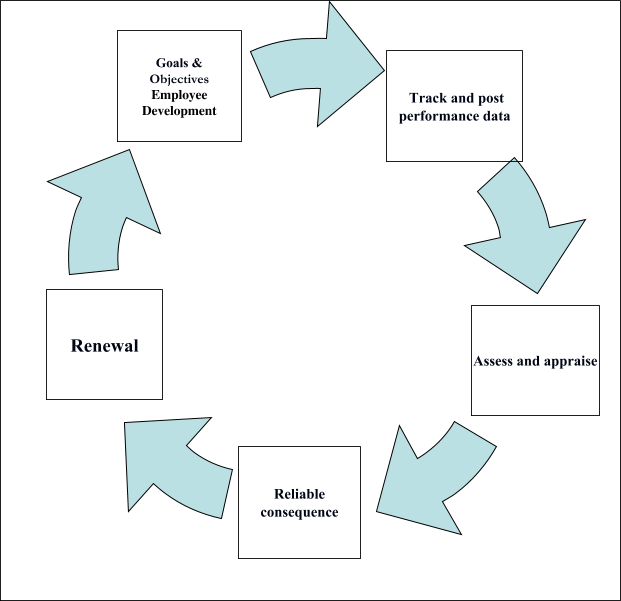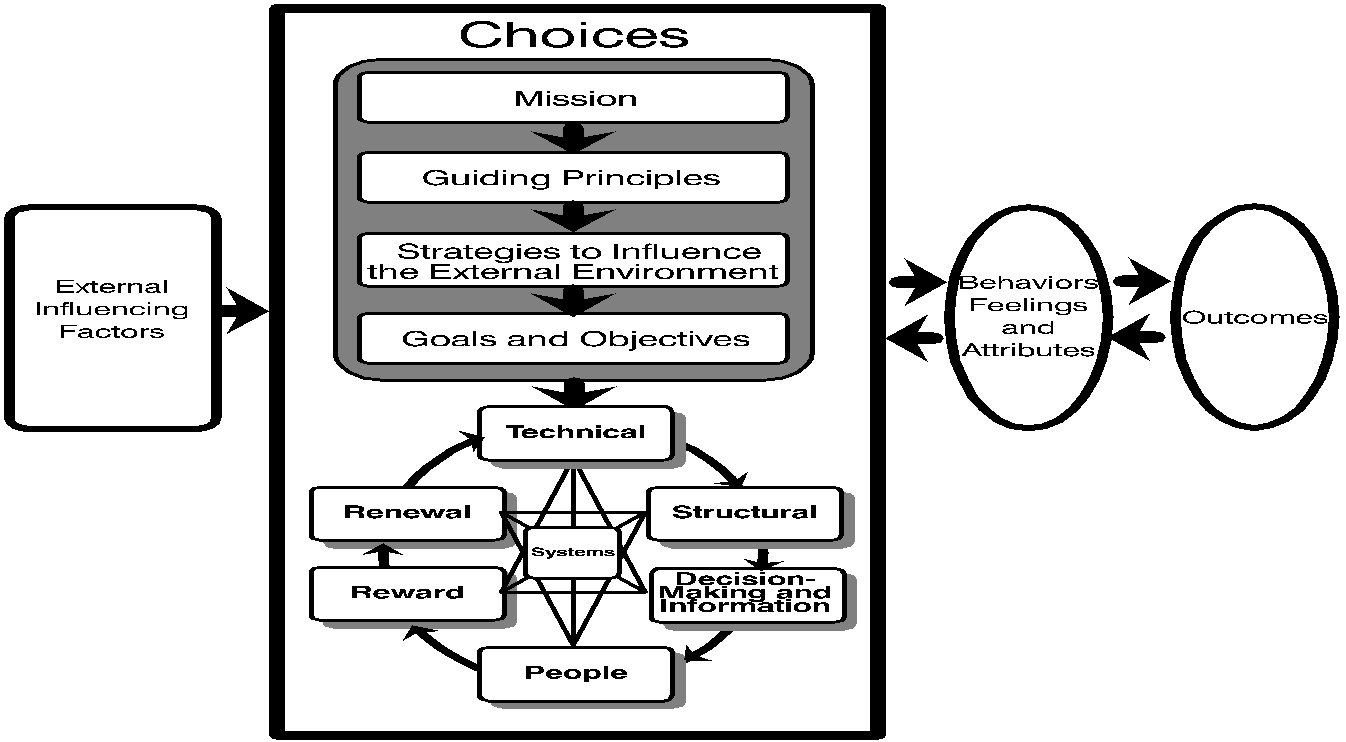How to Improve your Organization’s Performance
Problems are generally caused by a multitude of issues, which are invariably connected.
Employees frequently have to deal with demands for improved performance. The demands are typically accompanied by simplistic solutions, such as fire more people, tighten your performance standards or improve your IT systems. Rarely is there an acknowledgement that performance problems may be caused by inadequate resources, unrealistic expectations or a bureaucracy that is difficult to navigate.
In my experience, performance problems are generally caused by a multitude of issues, which are invariably connected. Thus if you want to truly improve performance in the long term, you must address the key issues in relation to each other.
Inadequate resources may very well be a real problem that is pulling down your performance. That certainly happened to me in my career and I suspect it has affected you as well. While this may be the case, you are unlikely to get more resources anytime soon, so you need to acknowledge this, document it for your own protection and do everything you can to improve performance anyway. Moreover, if you look deeper at your organization I bet you will find opportunities to improve your efficiency (and thus find more resources) that you didn’t realize were there.
The Performance Management Model
Below is a model I developed that depicts how performance can be managed as an ongoing system, rather than on an ad hoc basis.

If you think of performance management in these terms, I am confident you will begin to see opportunities for short-term and long-term improvement. Let’s examine how this approach can be applied in the real world of government.
Employee Development
Your employee development (knowledge management) plan should flow directly from your goals and objectives.
Make sure there is a clear line of sight from your organization’s national goals down to your group, unit or team and then to the individual employee. While it is easy to issue standards to employees who do transactional work, it is much harder to write them for jobs that are more difficult to measure (e.g. management analysts, attorneys, human resource specialists, etc.) For these types of jobs I recommend developing standards that focus primarily on the quality and timeliness of the work performed, with an additional measure for internal customer satisfaction.
Make sure your goals and objectives (at every level) are posted throughout your organization. Far too often, they are shared with only a few people. By all means post them all over your organization in a strategic fashion so people know what is expected of them at both the group and individual levels.
Concerning employee development, don't just give training for training’s sake, base the training on what knowledge needs to be shared in order for you to meet your goals and objectives. For example, if your group needs three people who are experts in skill set No. 1 (your highest priority skill) and you only have one expert, prepare to fill that gap by incorporating it into to your knowledge management plan.
We all know that training is the first thing to go in a budget crunch. However, I encourage you to always make this a priority and if you can’t pay for the appropriate training, try and give the training from within or find an organization to partner with. Online technical training classes can also be a cost effective approach.
Track and Post Performance Data
In my experience, many organizations do not track performance until the end of the fiscal year. This is a huge mistake. I encourage you to review group performance daily, weekly or monthly as appropriate—the more frequent the review sessions the better. (Teams of leaders often rotate responsibility for these discussions.) Daily sessions need not be more than a few minutes, but get in the habit of having everyone continually discuss and review group performance.
I also strongly encourage you to post performance relative to your goals. The more this information is posted in real time (through your IT system), the better, as it will be in everyone’s face and get more people to talk about performance issues and enable you to react to performance problems more quickly. I advocate using a central location to track broad performance and to display where it makes sense in order to encourage everyone to constantly focus on performance.
The same principle applies to individuals. I recommend posting everyone’s performance (although you might want to identify each employee by a number or letter.) In this way, each employee will know how everyone is doing, which will encourage the group, unit or team to learn from the top performers and help pull up the ones at the bottom. It will also prompt supervisors to treat everyone the same since they will know that many pairs of eyes will now be looking at the data.
Assess and Appraise
Use data to make judgments about how the organization is performing, and then react accordingly by adjusting staffing or your structure, changing policy, improving processes, determining if further training is needed, deciding if a change in management’s approach may be required, dishing out praise when appropriate, etc.
One organization I visited spent an enormous amount of money on overtime because they had hundreds of employees out on workers’ compensation. By taking a closer look at this program they were able to return some people back to work and reduce the money spent on overtime.
Another organization analyzed how much time they were spending on various activities and realized they were devoting too much time holding meetings. By reducing the time spent in meetings they were able to devote more hours to direct labor.
The concept of assessing and appraising also applies of course to individual employees. They should receive frequent feedback regarding their performance so there are no surprises come performance appraisal time. I encourage you to provide employees with feedback on a monthly basis, preferably through written report cards.
Reliable Consequences
A fundamental element of any performance system should be reliable consequences for every level of performance and behavior. In other words, outstanding groups or employees should be rewarded; average performance should result in people receiving within-grade increases, but generally not bonuses, while poor performance should trigger additional scrutiny and further action if the performance doesn’t improve.
The idea here is that the system should drive employees to improve, which it will do as long as it is clearly understood, there are no secrets and it is perceived as fair. If an employee understands that completing 4.0 widgets per day will consistently result in a bonus and she is averaging 3.7 widgets, she will likely do everything in her power to try to get to 4.0.
Conversely, if a low performer realizes that management consistently takes action against people who fail to meet their standards (while first making a good faith effort to try and help them improve), he will do whatever he can to step it up, since he knows that his job will be in jeopardy if he doesn’t improve.
However, if people believe that management merely rewards its favorites and takes action against the people it doesn’t like, the culture will deteriorate as people will conclude that it isn’t what you do but who you know that matters. On the other hand, if the employees believe they will be treated fairly and honestly, they are much more likely to be engaged and committed.
One organization I worked with had historically poor performance yet often gave out close to three awards per employee. This sent the message that whether your performance was outstanding or not, you were still going to be rewarded. As a result, the organization had a distinct lack of energy and a high degree of cynicism. After determining that many of the awards were not merited, management tightened up their standards, made sure that awards were only given to people who deserved them and people began to realize that the organization was becoming serious about performance.
Renewal
The concept of renewal is to look back on the past, learn from your mistakes, and make the organization better by renewing it. The best way to do this is by using a model to identify the relationships between your systems and determine what went well and what did not. The model I like to use is the Organization Systems Design (OSD) Model, which was refined by Paul Gustavson. Below is the model.

By reviewing the past against this model, you can see how your culture is greatly influenced by your design choices. Moreover, you can identify inconsistencies in your systems and application, which may have sent mixed messages to your employees and undermined your focus.
Use this model to ask yourself the following questions, which are not all inclusive: Do your systems drive your desired culture? Are your work processes adding value to your organization or are you spinning your wheels doing too much work that doesn’t add any value? Does your physical space (structural system) reflect the culture you are trying to establish? Do your employees have enough information to make sound decisions? If you want a team-based organization, do you reward group performance? Are you hiring the right people and on-boarding them properly? Do you have good systems but your managers are not properly applying them?
The point here is that great performance comes about when all of your systems are working together in a holistic fashion supported by a strong and committed management team.
The best way to have excellent long-term performance is to have a culture that truly values performance. Developing such a culture is not easy but it is not impossible either. Such a culture requires all of your systems to work together with a clear focus on performance, a workforce that is well developed and committed and a management team that is willing to apply the systems in a fair and equitable manner.
Stewart Liff is an HRM, performance management, visual management and team development expert, and the president and CEO of the consulting company Stewart Liff & Associates, Inc. He is the author or co-author of seven books, including Managing Government Employees, A Team of Leaders and Seeing is Believing. He can be reached at stew@stewartliff.com.







